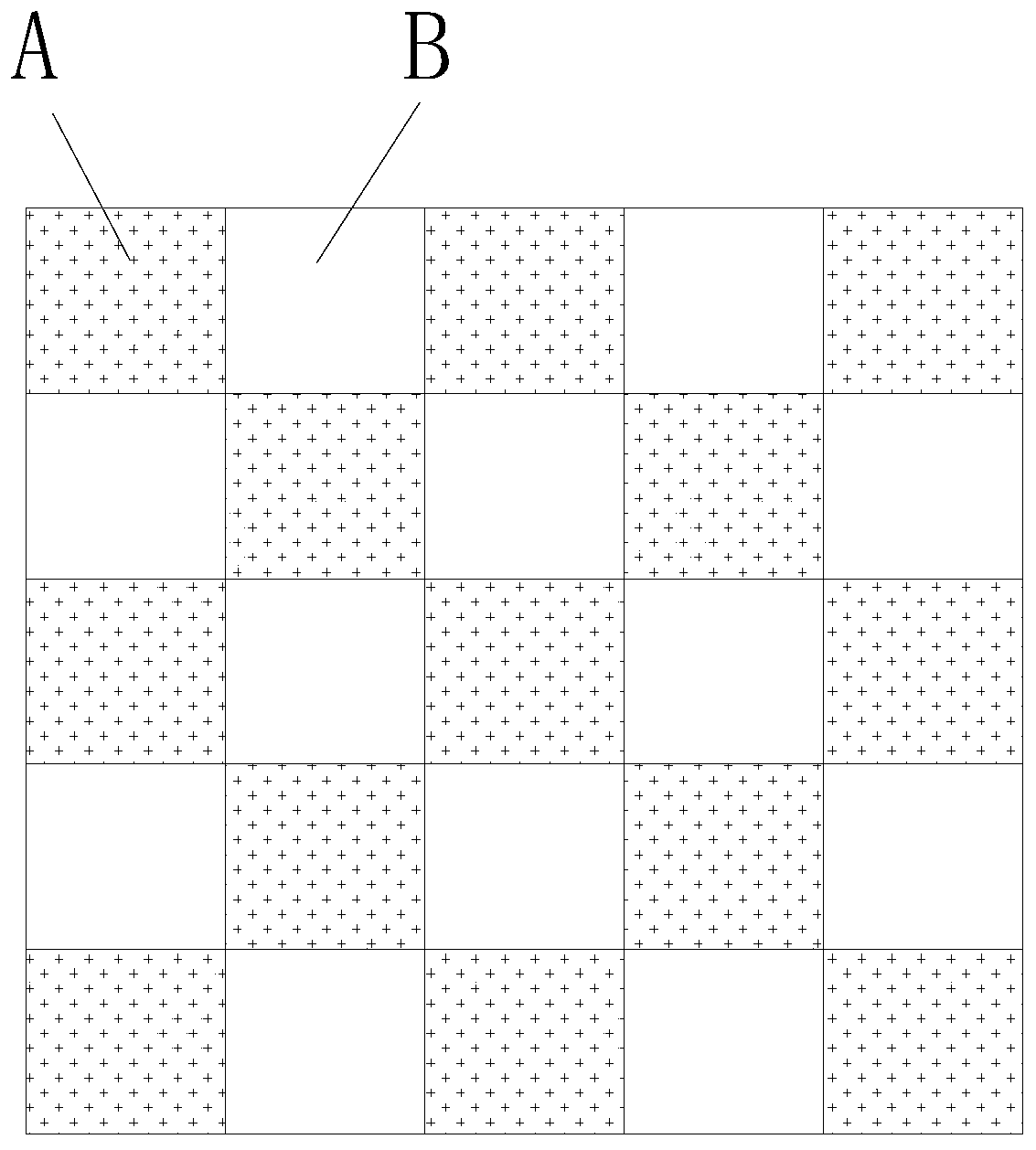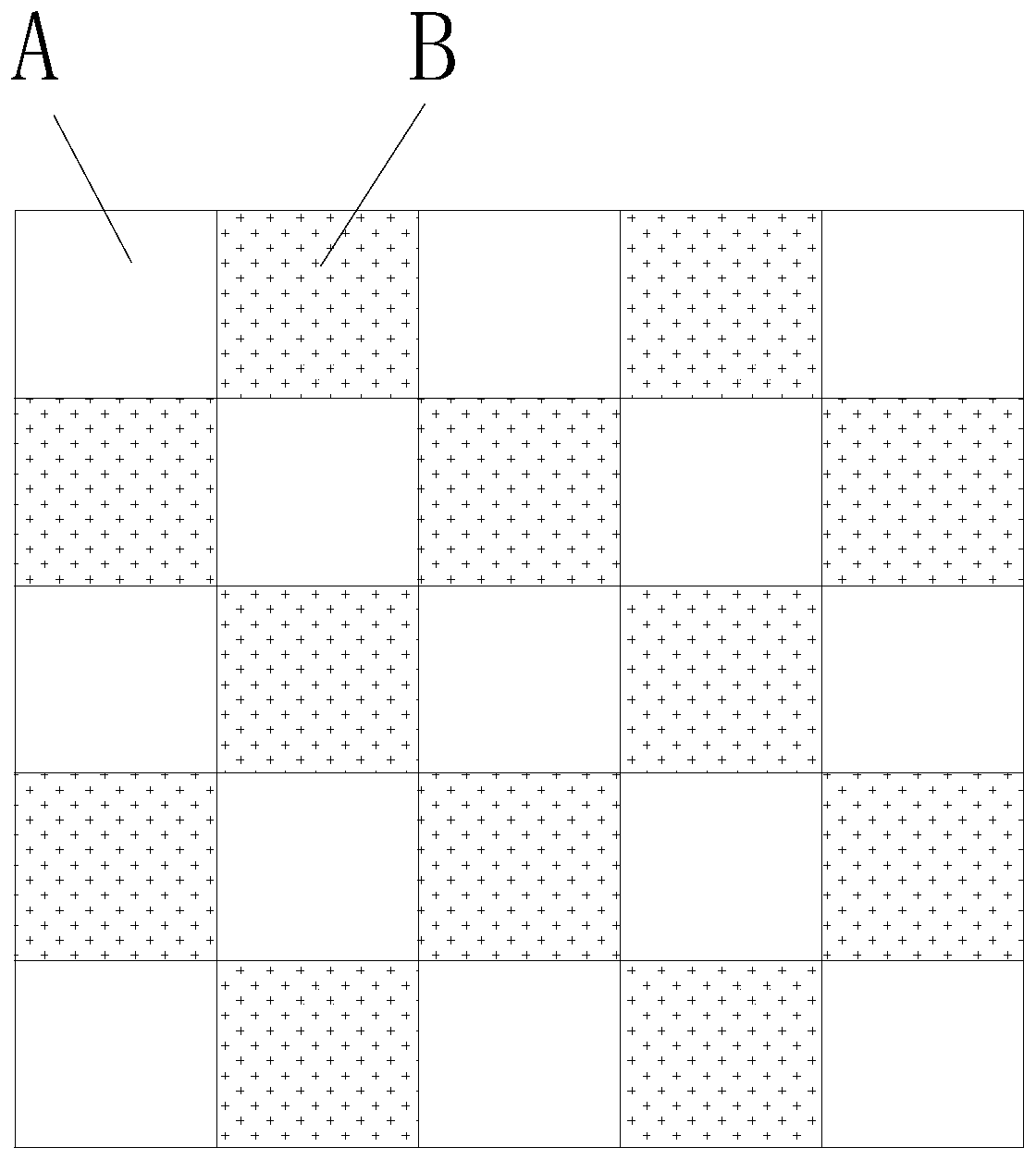Grid Alternate Bamboo Forest Covering Cultivation Method
A cultivation method and alternating technology, applied in the field of grid-shaped alternating bamboo forest covering cultivation, can solve the problems of weakening bamboo forest's ability to absorb and utilize resources, not being well resolved, and degrading bamboo forest stands, so as to benefit large-scale Promoted app performance
- Summary
- Abstract
- Description
- Claims
- Application Information
AI Technical Summary
Problems solved by technology
Method used
Image
Examples
Embodiment 1
[0016] Embodiment 1: In the Phyllostachys praecox forest of 0 years of cover period in newly afforestation 4 years, layout scale is 7m * 7m (49m 2 ) grid-shaped alternating coverage plots, covering each plot at intervals in the year of 2010, and the plots adjacent to the implementing coverage plots were not covered. In 2011, the grids that were not covered in that year will be covered, and the grids that have been covered will not be covered. By analogy, a grid-like interval and alternate mulching cultivation pattern is formed by year until 2016. Every year, new bamboos are kept in the uncovered grids according to the standing bamboo degree of 12,000 plants / ha and the age structure of 1 to 4-year-old bamboos at a ratio of 1:1:1:1, while the covered grids are not kept. Continuous coverage for 6 years, the average annual output of bamboo shoots is 9300kg / ha, the bamboo forest has not been closed, and no population degradation has occurred.
Embodiment 2
[0017] Embodiment 2: In the thunder bamboo forest whose cumulative coverage period is 6 years, the layout scale is 5m * 5m (25m 2 ) grid-shaped alternating coverage plots, covering each plot at intervals in the year of 2010, and the plots adjacent to the implementing coverage plots were not covered. In 2011, the grids that were not covered in that year will be covered, and the grids that have been covered will not be covered. By analogy, a grid-like interval and alternate mulching cultivation pattern is formed by year until 2016. Every year, new bamboos are kept in the uncovered grids according to the standing bamboo degree of 11,000 plants / ha and the age structure of 1 to 4-year-old bamboos at a ratio of 1:1:1:1, while the covered grids do not keep new bamboos. Continuous coverage for 6 years, the average annual output of bamboo shoots is 7500kg / ha, the bamboo forest has not been closed, and no population degradation has occurred.
Embodiment 3
[0018] Embodiment 3: In the thunder bamboo forest whose cumulative coverage period is 12, the layout scale is 3m * 3m (9m 2 ) grid-shaped alternating coverage plots, covering each plot at intervals in the year of 2010, and the plots adjacent to the implementing coverage plots were not covered. In 2011, the grids that were not covered in that year will be covered, and the grids that have been covered will not be covered. By analogy, a grid-like interval and alternate mulching cultivation pattern is formed by year until 2016. Every year, new bamboos are kept in the uncovered grids according to the standing bamboo degree of 10,000 plants / ha and the age structure of 1 to 4-year-old bamboos at a ratio of 1:1:1:1, while the covered grids are not kept. Continuous coverage for 6 years, the average annual output of bamboo shoots is 6700kg / ha, the bamboo forest has not been closed, and no obvious population degradation has occurred.
PUM
 Login to View More
Login to View More Abstract
Description
Claims
Application Information
 Login to View More
Login to View More - R&D
- Intellectual Property
- Life Sciences
- Materials
- Tech Scout
- Unparalleled Data Quality
- Higher Quality Content
- 60% Fewer Hallucinations
Browse by: Latest US Patents, China's latest patents, Technical Efficacy Thesaurus, Application Domain, Technology Topic, Popular Technical Reports.
© 2025 PatSnap. All rights reserved.Legal|Privacy policy|Modern Slavery Act Transparency Statement|Sitemap|About US| Contact US: help@patsnap.com


